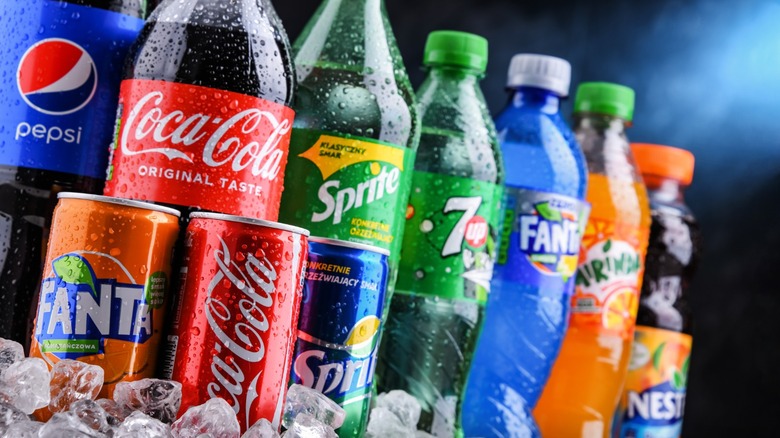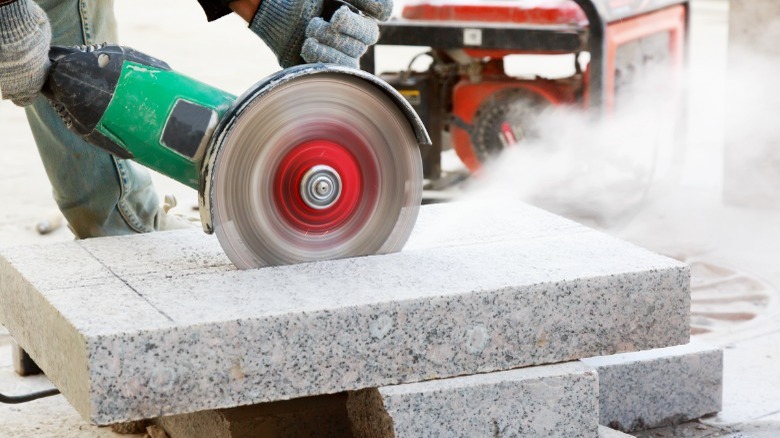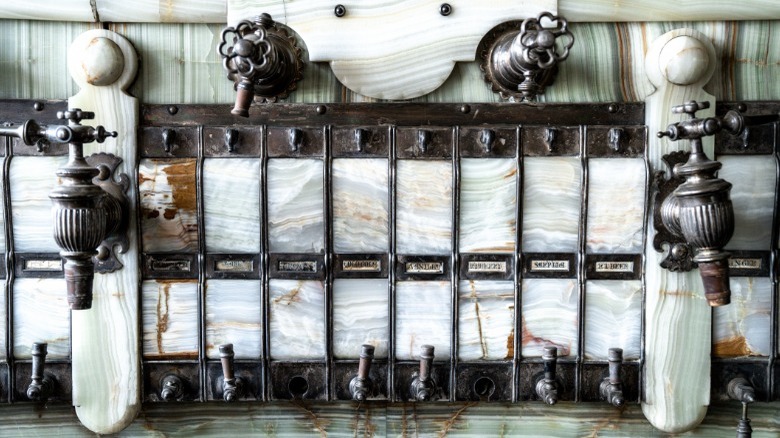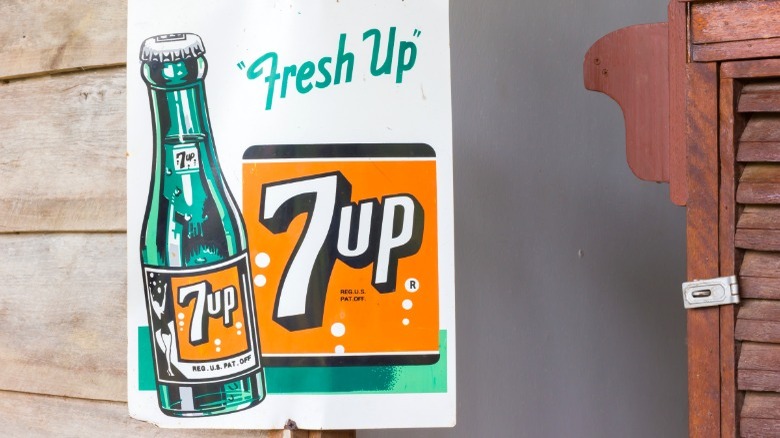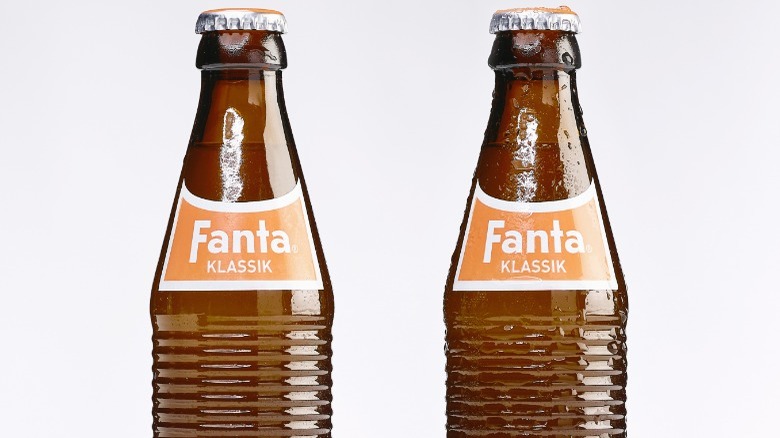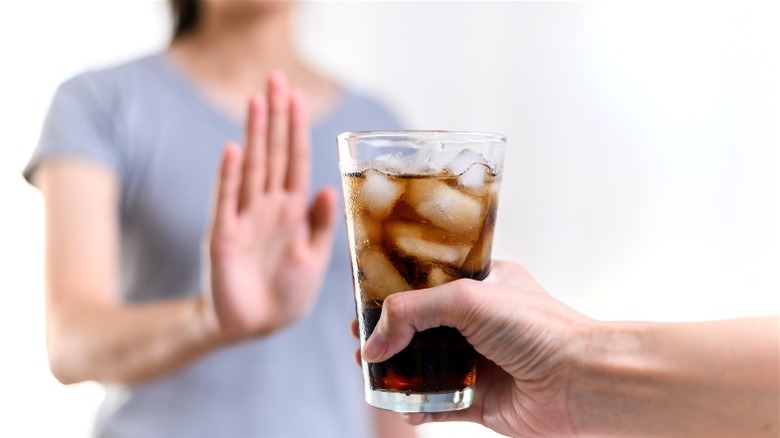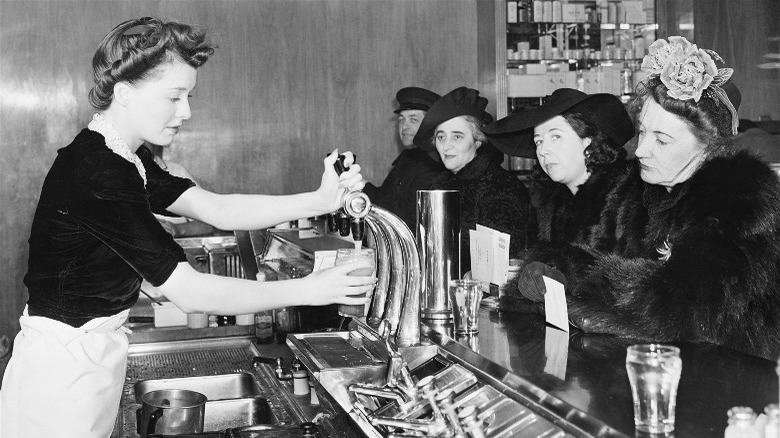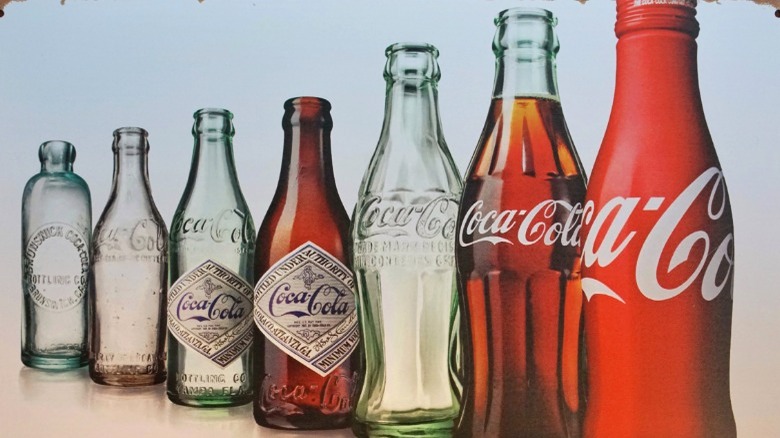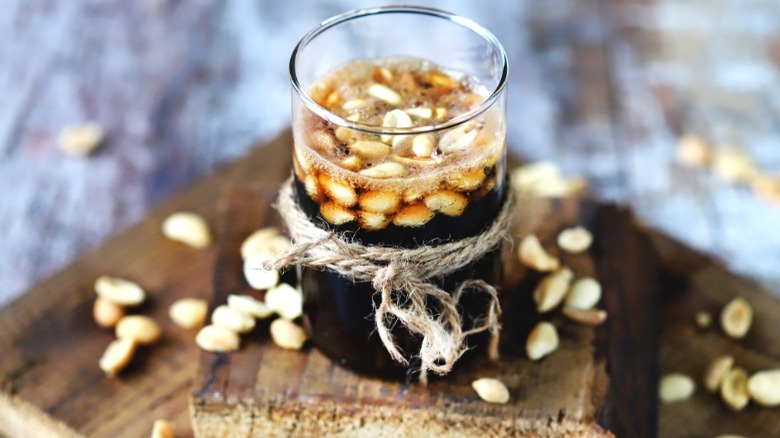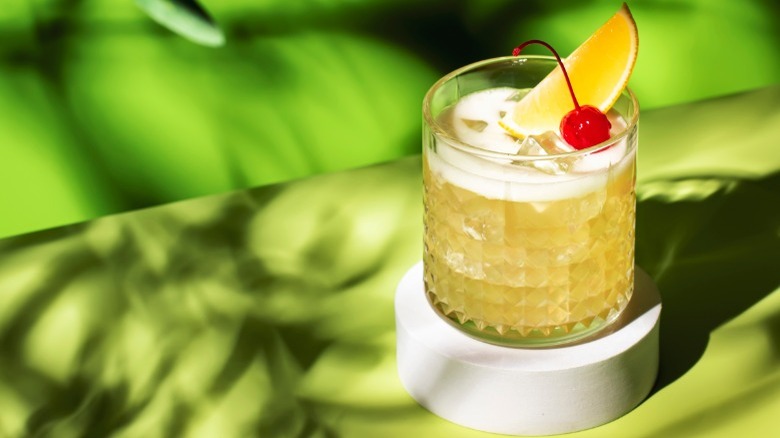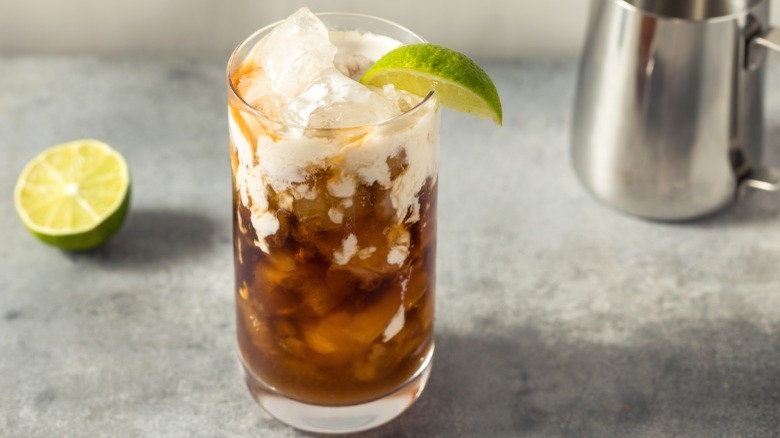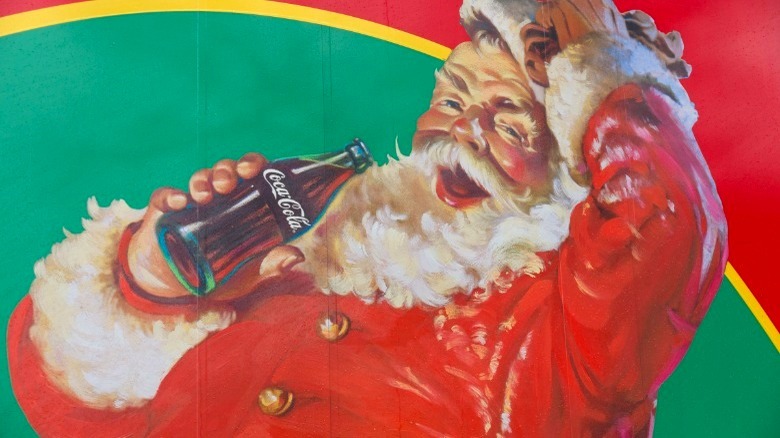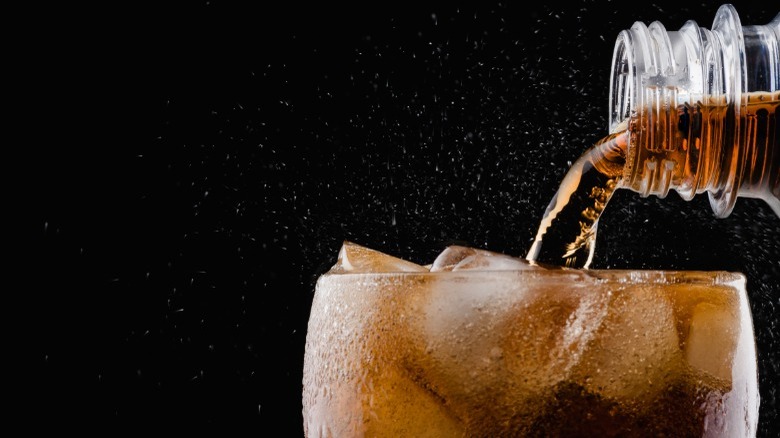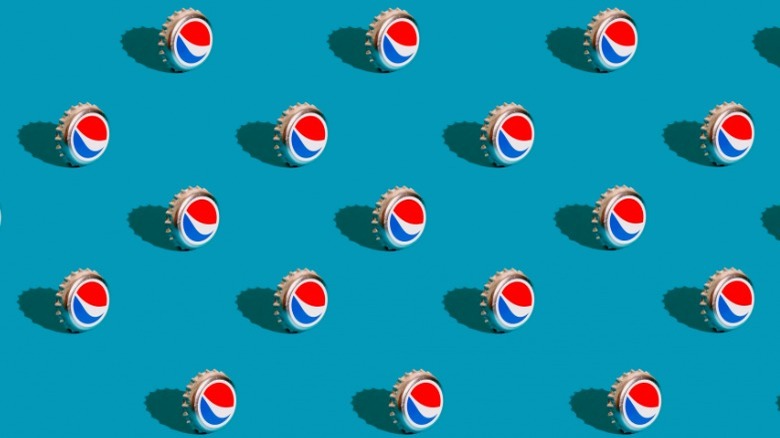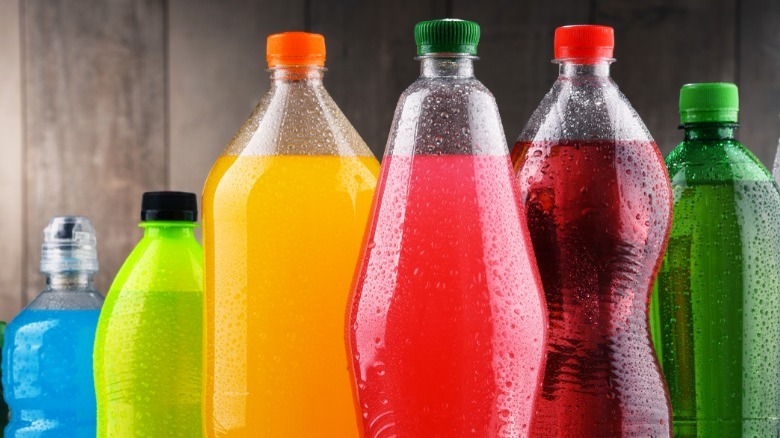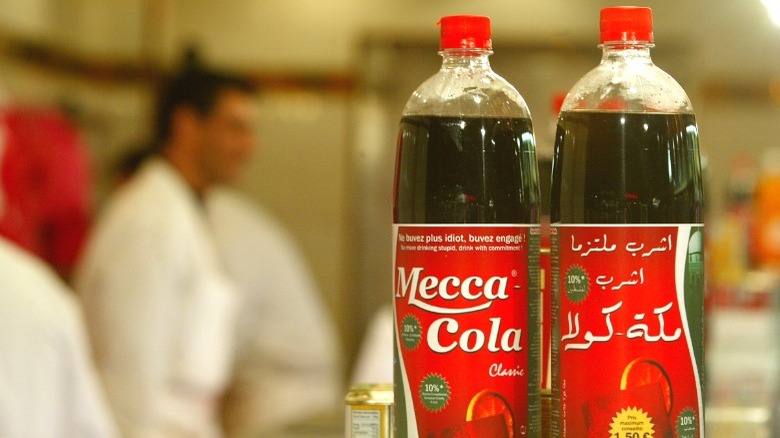17 Facts You Didn't Know About Soda
Soda has become a ubiquitous part of modern life, with a dizzying array of flavors and varieties available at every turn. But despite its popularity, there's a lot you may not know about this fizzy beverage. From its 19th-century drugstore origins to its cultural symbolism, the world of pop is full of interesting and sometimes bizarre facts. Did you know hot sodas were once popular during the winter months? Or that Mecca Cola was launched as a political alternative to Big Soda? And that Coca-Cola wasn't the only drink initially made with ingredients that would be illegal today?
In this article, we will dive into some of the lesser-known facts about humanity's favorite beverages that will quench your thirst for knowledge. So whether you're a soda lover or simply curious about the history and science behind this beloved beverage, sit back, crack open a cold one, and discover the facts you didn't know about soda.
Flavored sodas were originally created by pharmacists
Today, you can get a refreshing, sweet fizzy drink almost anywhere — in a fast food joint, on the street, or even on a plane. But that wasn't always the case: In the early days of soda, you could only get it at pharmacies. In the United States, soda pop can be traced back to the Victorian-era practice of selling patent medicines. In fact, early sodas were technically carbonated medicinal tonics.
The ingredient lists boasted anything from tobacco and caffeine to cocaine, and the drinks were marketed as miracle cures that could transform a person's health and well-being. Another reason 19th-century pharmacists started adding flavors to fizzy drinks was to mask the unpleasant taste of these medicinal ingredients. As a result, these early versions of soda often contained ingredients such as ginger, sarsaparilla, and birch bark that were thought to have health benefits. As the popularity of these patent medicines grew, many of the ingredients used in them were adapted to create soda flavors.
Early carbonated drinks were made from construction materials
During the early days of fizzy drinks, the manufacturing process was far from refined. Carbonation was no easy task, but this was the Industrial Age, and the desire to overcome technical challenges was high. In order to create carbonic acid gas, English chemist and entrepreneur John Matthews used powdered calcium carbonate back home, but discovered marble was more readily available when he moved to the U.S. in 1832.
His breakthrough came after he obtained all the scrap marble from St. Patrick's Cathedral in New York, then still under construction. The amount he bought was enough for 25 million gallons of effervescent water, per American Heritage, of which gave his business a head start. As Matthews' soda gained popularity, he continued to refine the manufacturing process and grow his business. By the time of his passing, Matthews' success had led him to own more than 500 soda fountains and earned him the well-deserved "Soda Fountain King" title.
There used to be a special soda flavor for those who didn't care
One of the fascinating aspects of soft drink development over the centuries is the variety of flavors designed to appeal to everyone. In fact, there used to be a specific flavor known as "Don't Care," created for customers who couldn't decide on a flavor or wanted something stronger than a sugary soda. At first, these were low-alcoholic drinks — a recipe published in The Standard Manual of Soda and Other Beverages in 1897 included a combination of fruit syrups, vanilla extract, and port wine. Another "Don't Care" syrup recipe involved whiskey, simple syrup, and nutmeg essence.
However, the ingredient list was not set in stone, and it could even be made with a mixture of the lowest-selling syrup flavors. You certainly won't find it today, but it remains a fascinating example of how the soda industry evolved to cater to every type of customer.
7 Up was designed to lift spirits and cure hangovers
In the 1920s, a new lemon-lime soft drink was created with a unique selling proposition: It promised to lift people's spirits and cure hangovers. This soft drink, which we now know as 7 Up, used to have a much more complicated name: Bib-Label Lithiated Lemon-Lime Soda. The "lithiated" part of the original name referred to lithium citrate, a mood stabilizer used to treat bipolar disorder and depression.
The idea was that the addition of lithium to the soft drink would have a similarly uplifting effect on people's moods. The lemon-lime flavor was chosen because it was believed to be more thirst-quenching than other flavors. In 1948, the makers of 7 Up had to remove the lithium citrate from the recipe due to concerns about its safety. But the lemon-lime flavor remained, and 7 Up continued to be marketed as a refreshing, mood-lifting beverage.
Soda fountains were one of America's original third places
Going to an old-fashioned soda fountain was an experience that went beyond just grabbing a drink. It was a place where people could gather and socialize, a true "third place" between work and home. Sociologist Ray Oldenburg, who coined the term, compared them to French cafés, English pubs, and Italian piazzas. These establishments were known for their comfortable chairs and counters, where people could sit and enjoy their drinks, often accompanied by a light meal or snack in a lively atmosphere.
However, the rise of fast food chains and suburbanization in the 1950s and '60s signaled the beginning of the end for soda fountains as social gathering places. As more people began to eat on the go, these community hubs lost their appeal. Today, few authentic soda fountains remain, but those that do continue to offer a taste of nostalgia and a glimpse into a bygone era.
Fanta was born out of wartime necessity
Every famous soda brand seems to have dark secrets, and Fanta's surprising origin story is no exception. The drink, which got its name after the German word Fantasie, was actually born out of wartime necessity in Nazi Germany. During World War II, Coca-Cola's German subsidiary faced a dilemma; how to continue producing its popular soda when wartime restrictions made it impossible to import the necessary ingredients.
Max Keith, the head of Coca-Cola's German operations, ordered his team to create a new soda using only the available industry byproducts such as whey, fruit shavings, and apple fibers. The result was Fanta, a bubbly orange-flavored soda that was an immediate hit with the German population. Today, Fanta is sold in 188 markets, per the brand's Facebook, and has a wide range of flavors, but its origins as a wartime innovation remain an important part of its history.
The first diet soda would be illegal today
Before there was Diet Coke, and before there was Tab, there was No-Cal. The first diet soda was introduced in 1952 by Hyman Kirsch, a philanthropist and beverage industry pioneer. It was designed and marketed toward people with diabetes and cardiovascular problems. The secret to its low-calorie content was a sweetener called cyclamate, which was 30 times sweeter than sugar but had no calories.
However, in 1969, the FDA banned cyclamate after studies showed that it caused cancer in laboratory rats, and it is still banned in the U.S. today. Looking back, the intentions behind developing No-Cal were good, but the use of cyclamate proved to be a questionable choice. The troubling sweetener behind the first-ever diet soda serves as a cautionary tale about the importance of thoroughly researching the safety of food additives before introducing them to the public.
Hot sodas were the pumpkin spice lattes of the early 20th century
In the early 20th century, people weren't as averse to the idea of drinking a hot soda as they are now. That could be attributed in part to the since-debunked belief that cold drinks are detrimental to human health. But the truth about hot soda has likely more to do with money than health concerns. During the winter months, soda fountains would promote their seasonal hot beverages as a way to attract more customers. Surprisingly, the term "hot soda" was used for anything from hot water with sweet syrup to tomato bouillon and even clam broth.
However, the trend of drinking hot soda began to decline in the mid-20th century as people's tastes and preferences shifted towards other hot beverages. Today, it's rare to find a soda fountain that offers hot soda, but for a brief moment in history, it was the pumpkin spice latte of its time.
Soda packaging is a lesson in industrial design
Ever since their inception, packaged drinks have been going through a never-ending transformation. Early drinks were often sold in barrels, bottles, or jugs, which had to be returned and reused. Then in the late 19th and early 20th centuries, glass bottles became popular for carbonated drinks, and companies began to use elaborate designs and shapes to differentiate their products on the shelves. For example, the inspiration behind the original Coca-Cola bottle shape was the curves of the cocoa bean with its distinctive grooves and ridges.
The design was intended to make Coca-Cola instantly recognizable even in the dark or if shattered. In the 1960s, aluminum cans with ring-pull tabs became more common for both soda and beer, and plastic bottles began to slowly take over in the 1980s. Fortunately, modern drink packaging strives to be more sustainable, using both recyclable and recycled materials.
Southerners have a particular way of enjoying their Coke
If you've never tried putting peanuts in a cold bottle of Coke, you might be missing out on a beloved Southern tradition. This snack, sometimes referred to as a "goober rig," dates back to the 1920s when bottled Coca-Cola first became popular in the South. At the time, salted, shelled peanuts were a common snack food and were often sold in single-serving packages. It wasn't long before people started dropping their peanuts straight into their bottles of Coke, creating a unique salty and sweet combination that quickly caught on.
This treat was inexpensive, convenient, and covered all bases: hydration, stimulation, and satiation. There was no need to use both hands or even clean them to enjoy it — which is why it is believed to have originated as a "working man's lunch." If you want to experience it yourself, pour half a pack of lightly salted peanuts into a 20-ounce cold Coca-Cola bottle, and enjoy the ride.
Mountain Dew was originally created as a mixer for whiskey
These days, Mountain Dew is the online gamer's caffeinated drink of choice. But its creators sure didn't intend it to be that way. In fact, the reason Mountain Dew was invented has boozy undertones. Tennessee beverage bottlers Barney and Ally Hartman developed Mountain Dew in the 1940s as a mixer for whiskey, specifically because their own favorite mixer was no longer available. The original flavor was lemon-lime, and the name they chose was a reference to moonshine. The Hartman brothers marketed Mountain Dew based on the hillbilly image of the mid-20th century, with the tagline "Ya-Hoo! Mountain Dew. It'll tickle yore innards!"
It wasn't until the 1960s when PepsiCo obtained the product rights that the drink was rebranded as a soda and marketed to the masses. Since then, Mountain Dew has become a staple of American soda culture, known for its bright green color and bold citrus flavor.
Trendy dirty soda has actually been around for over a decade
Dirty soda, a trendy beverage that features soda mixed with flavored syrups and other add-ins, may seem like a recent creation. However, its roots actually circle back to the Mormon community in Utah, where The Church of the Latter-Day Saints is headquartered. Its followers were historically prohibited from consuming alcohol and all caffeinated drinks until, in 2012, an exception was made for the cold ones. Around the same time, dirty soda shops, dubbed "the Mormon Starbucks" by locals, have started to take over the state.
Swig and Sodalicious began offering unique and creative drink combinations, including flavored syrups, fresh fruit, candy, and cream mixed with brand-name sodas. Over time, the popularity of dirty sodas spread beyond Utah and into other parts of the country, particularly among young people. In recent years, social media has helped fuel the trend, with videos of colorful, creative dirty sodas shared widely on platforms like TikTok.
Santa wouldn't look the same without Coca-Cola
When we hear "Santa Claus," we all picture the same jolly white-bearded man in a red suit. However, this iconic image wasn't always the default. For decades, he was depicted in various ways, ranging from a gaunt man to a gnome-like figure dressed in grey, green, or brown. The shift toward red-robed Santa started in the 1870s with the cartoonist Thomas Nast, who pictured him in a costume similar to the one we know today. While Nast's work was influential, it didn't manage to wipe out other versions of Santa from the public consciousness as well as Coca-Cola's iconic Santa Claus did a few decades later.
In 1931, the company commissioned artist Haddon Sundblom to create a new image of Santa Claus for its holiday advertising campaign. The resulting image was a kind, grandfatherly bespectacled figure in a fur-trimmed red suit, often pictured holding a bottle of Coca-Cola. Needless to say, this massively successful campaign (and all the ones that followed) helped to solidify the image of Santa Claus as we know it today.
There's a scientific reason soda packaging affects its taste
What's your favorite way to drink soda? If your answer was glass, you're not alone. In fact, there is a scientific explanation behind this phenomenon. The reason why canned and bottled sodas taste different has to do with the packaging materials. Aluminum cans are typically lined with a polymer that can sometimes absorb some of the soda's flavor. Meanwhile, plastic bottles can both absorb the flavors of other substances and leach their own chemicals into the drink. Additionally, plastic is more CO2-permeable, meaning the drinks lose their fizz faster.
Glass bottles, on the other hand, trap carbon dioxide well, are nonreactive, and do not affect the flavor of the soda. Finally, the shape of the bottle can also affect the drinking experience. The curves and contours of the bottle can enhance the aroma and taste of the soda, while the weight of the bottle can give a sense of heft and quality.
One of Pepsi's promotional campaigns took a deadly turn
In the summer of 1992, Pepsi launched a promotional campaign in the Philippines called "Pepsi Number Fever." The concept was simple: If the number under your bottle cap matched the one announced on T.V., you could win up to 1 million pesos (around $40,000 at the time). The campaign was an instant hit, and people began hoarding Pepsi bottles in hopes of winning big. However, the campaign soon turned into a nightmare as Pepsi announced the winning number on live TV — 349 — but also admitted that there had been a mistake and that there were actually thousands of winners, each entitled to the grand prize.
Of course, there was no chance of paying out all of these prizes. Riots broke out across the country, and several people were killed. In the end, Pepsi had to pay out around $10 million in prizes, far more than it had budgeted for. To this day, the 349 debacle remains one of the most infamous marketing disasters in history.
There is no limit to weird soda flavors – and you can find most of them in California
The soda industry has come a long way since the late 19th century when there were only a few dozen soda flavors available at selected drugstores. Nowadays, you can find hundreds of soda flavors that are both traditional and unconventional. In fact, some soda flavors are so unusual that they might seem downright strange. Fortunately, if you're a soda enthusiast looking to try unique and exotic varieties, from ranch-flavored soda to those boasting bacon, butter, and toxic waste on their labels, you can head to California.
There, you can find a handful of establishments, such as Galco's Soda Pop Stop and Rocket Fizz, that offer an extensive collection of hundreds of soda varieties from all over the world and a chance to create your own flavor from scratch. These establishments are a haven for soda lovers looking for something new and exciting to try.
Mecca Cola is the political opposite of Big Soda
While many countries have their own national cola brands, Mecca Cola, a drink launched 20 years ago, takes a political stance against Coca-Cola and what it represents. The drink was created in France in 2002 as a way to express support for the Palestinian cause, with part of the profits donated to charities that support Palestine. The company's founder, Tawfik Mathlouthi, was inspired to create Mecca Cola after seeing the growing popularity of anti-globalization movements and the need for a non-alcoholic, Muslim-friendly drink.
The brand's marketing slogan is "Don't drink stupid. Drink committed," and it positions itself as a socially responsible alternative to Big Soda. Its marketing strategy emphasizes its opposition to Coca-Cola's perceived monopolistic practices and support for social justice causes. The drink's success reflects consumers' increasing interest in products that align with their values and beliefs.
Static Media owns and operates Tasting Table and Mashed.
